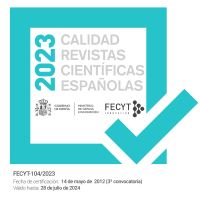Guidance and tutorial action in higher education: the contribution of service-learning
DOI:
https://doi.org/10.5944/reop.vol.26.num.2.2015.15213Keywords:
service-learning, guidance, tutorial action, EHEAAbstract
ABSTRACT
The new university model derived from the EHEA entails a major reform in two directions: a curricular one related with the syllabus, the new organization of degrees and the contents that should be integrated in European Higher Education, and a methodological one, which refers to new ways of doing. In this context, tutorial action and guidance gain relevance, and university faculty face new challenges, methodologically, but also new opportunities.Considering Service-Learning (S-L) as an ally in the new teaching role, we were interested in exploring the implications, opportunities and challenges of this methodology for guidance and tutorial action. In order to achieve this objective, the method used to carry out this study was a literature review, using the following key-words: university guidance, tutorial action, Service Learning, as well as S-L in the training of guidance practitioners, besides the analysis of some S-L learning experiences at universities.This review has enabled us to identify clear contributions of S-L to the field of university guidance and tutorial action, especially in relation to the development of competences concerning social responsibility and community action, but also other academic and career aspects, which we present in this article. Finally, we propose some future research lines and training in relation to this issue.
Downloads
Downloads
How to Cite
Issue
Section
License
Las obras que se publican en la revista REOP están sujetas a los siguientes términos:
1. Los autores conservan los derechos patrimoniales (copyright) de las obras publicadas, y garantizan a la revista el derecho de ser la primera publicación del trabajo al igual que permiten la reutilización de las mismas bajo la licencia de uso indicada en el punto 2.
2. Las obras se publican en la edición electrónica de la revista bajo una licencia Creative Commons Reconocimiento-NoComercial 4.0 Internacional . Se pueden copiar, usar, difundir, transmitir y exponer públicamente, siempre que: I) se cite la autoría y la fuente original de su publicación (revista, editorial y URL de la obra); II) no se usen para fines comerciales; III) se mencione la existencia y especificaciones de esta licencia de uso.
3. Condiciones de auto-archivo. Se permite y se anima a los autores a difundir electrónicamente la publicación de sus obras, ya que favorece su circulación y difusión y con ello un posible aumento en su citación y alcance entre la comunidad académica.






